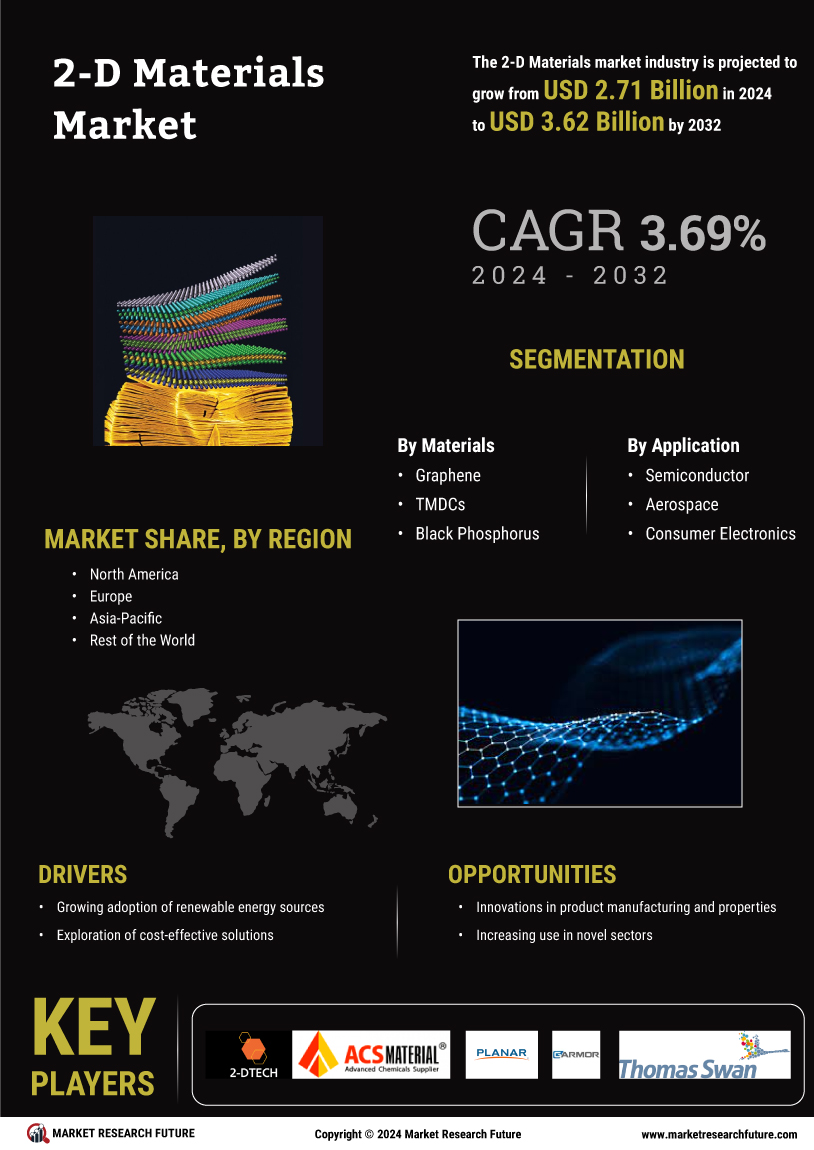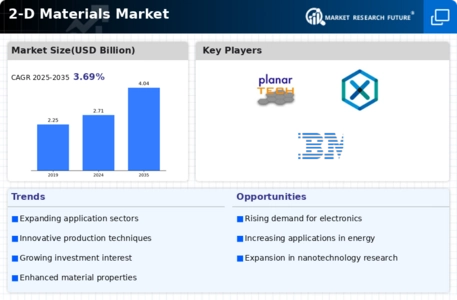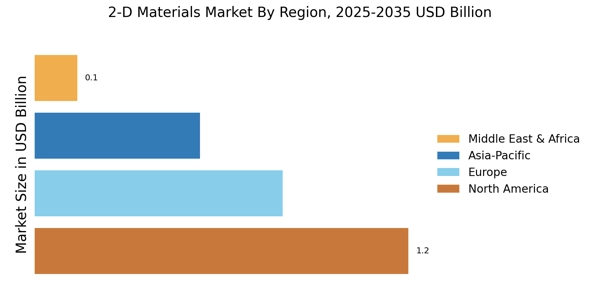Innovations in Flexible Electronics
The 2-D Materials Market is significantly influenced by innovations in flexible electronics. The unique mechanical properties of 2-D materials, such as their lightweight and flexibility, make them ideal candidates for next-generation electronic devices. The flexible electronics market is expected to grow at a CAGR of 20% over the next five years, driven by consumer demand for portable and adaptable devices. This trend suggests that manufacturers are increasingly incorporating 2-D materials into their products, enhancing performance and functionality. As the market for flexible electronics expands, the 2-D Materials Market is likely to benefit from increased investments and research, leading to further advancements in material applications and device performance.
Increasing Applications in Photonics
The 2-D Materials Market is witnessing a surge in applications within the photonics sector. Materials such as graphene and transition metal dichalcogenides are being utilized for their unique optical properties, which enable advancements in photonic devices. The market for photonic applications is projected to reach USD 1.5 billion by 2026, indicating a robust growth trajectory. This growth is driven by the need for faster data transmission and improved signal processing capabilities. As industries increasingly adopt photonic technologies, the demand for 2-D materials is likely to escalate, further solidifying their role in the 2-D Materials Market. The integration of these materials into photonic circuits could potentially revolutionize telecommunications and data centers, enhancing overall efficiency.
Growth in Renewable Energy Technologies
The 2-D Materials Market is poised for growth due to the increasing focus on renewable energy technologies. Materials like graphene are being explored for their potential in solar cells and energy storage systems. The renewable energy sector is projected to reach USD 2 trillion by 2025, with a significant portion of this growth attributed to advancements in material science. The integration of 2-D materials into energy systems could enhance efficiency and reduce costs, making renewable technologies more accessible. As the demand for sustainable energy solutions rises, the 2-D Materials Market is likely to see a corresponding increase in research and development efforts aimed at optimizing these materials for energy applications.
Emerging Trends in Biomedical Applications
The 2-D Materials Market is experiencing growth driven by emerging trends in biomedical applications. The unique properties of 2-D materials, such as biocompatibility and high surface area, make them suitable for drug delivery systems and biosensors. The biomedical sector is projected to grow at a CAGR of 15% over the next five years, with increasing interest in nanomaterials for medical applications. This trend suggests that the integration of 2-D materials into healthcare solutions could enhance diagnostic and therapeutic capabilities. As research progresses, the 2-D Materials Market is likely to see a rise in collaborations between material scientists and healthcare professionals, leading to innovative applications that could transform patient care.
Rising Investment in Research and Development
The 2-D Materials Market is benefiting from a notable increase in investment directed towards research and development. Governments and private entities are recognizing the potential of 2-D materials in various applications, leading to funding initiatives aimed at exploring their capabilities. In 2025, global investment in nanotechnology research is expected to exceed USD 30 billion, with a significant portion allocated to 2-D materials. This influx of capital is likely to accelerate innovation and commercialization efforts, fostering a competitive landscape within the 2-D Materials Market. As new applications are discovered and existing technologies are refined, the market is expected to expand, attracting further interest from stakeholders.

















Leave a Comment